Discover 35 hidden attractions, cool sights, and unusual things to do in Magdeburg (Germany). Don't miss out on these must-see attractions: Elbauenpark, Magdeburg Zoo, and Magdeburg Cathedral. Also, be sure to include Theater Magdeburg in your itinerary.
Below, you can find the list of the most amazing places you should visit in Magdeburg (Saxony-Anhalt).
Table of Contents
Elbauenpark
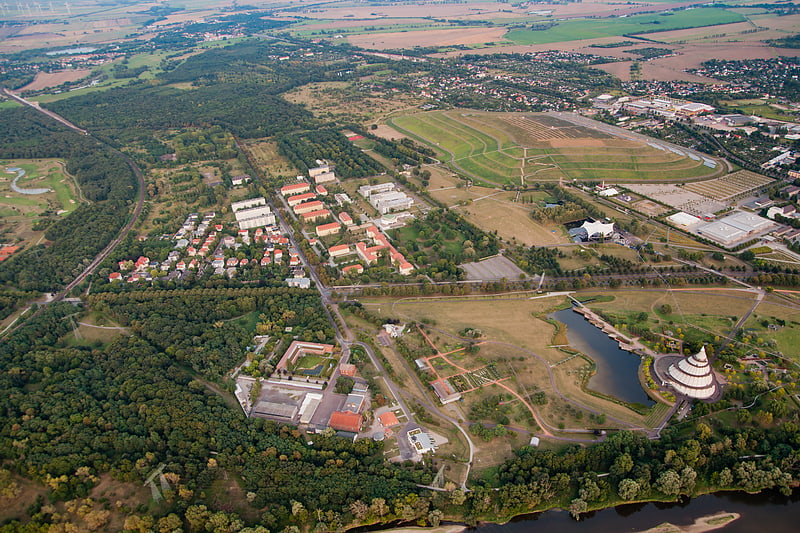
Park in Magdeburg, Germany. The Elbauenpark is a family and leisure park in Magdeburg, capital city of Saxony-Anhalt, Germany.
The park area is about 100 hectares and consists of the parts Kleiner Anger and Großer Anger. The park areas are connected with a pedestrian bridge over the Herrenkrugstraße. The park has a total of four combined entrances and exits as well as three exits. According to the Stern magazine, the Elbauenpark is the best leisure attraction in Saxony-Anhalt.[1]
Address: Tessenowstraße 7, 39114 Magdeburg
Magdeburg Zoo
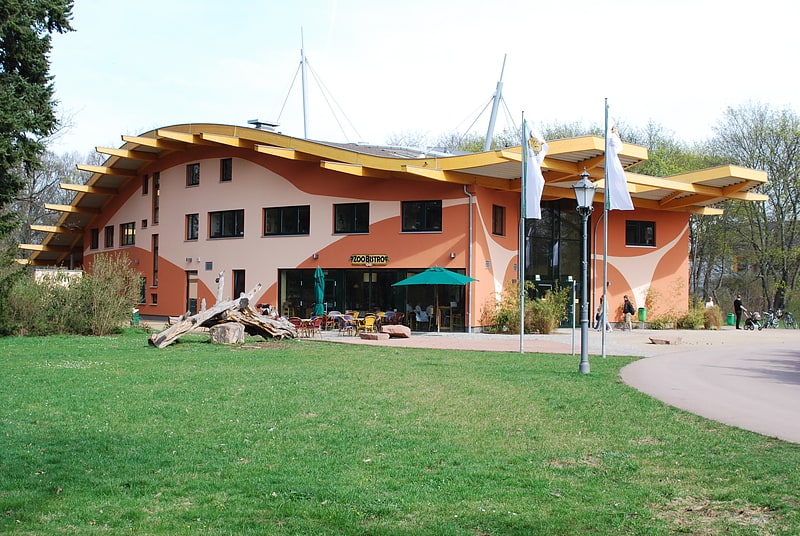
Also known as: Zoologischer Garten Magdeburg
Zoo in Magdeburg, Germany. Magdeburg Zoo is a zoo in the city of Magdeburg in the region Sachsen-Anhalt, Germany. The zoo was founded in 1950, and covers 16 hectares.[2]
Address: Zooallee 1, 39124 Magdeburg
Magdeburg Cathedral
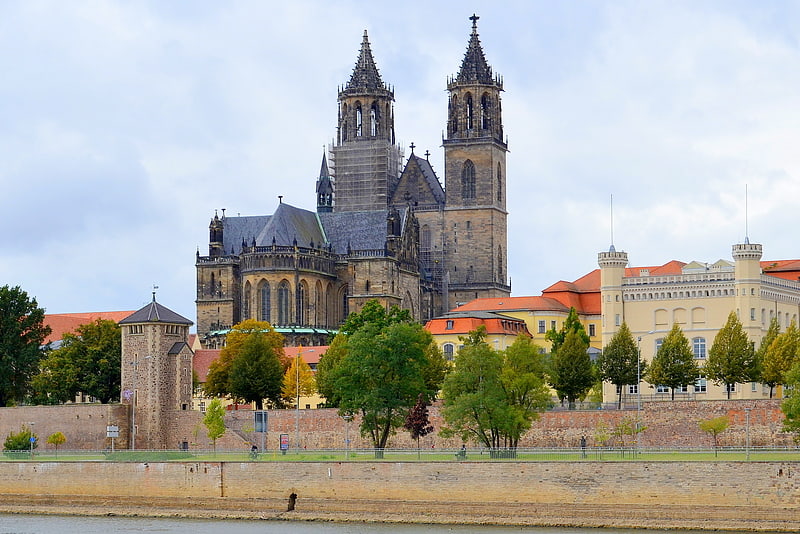
Also known as: Magdeburger Dom
Landmark cathedral with twin spires. Magdeburg Cathedral, officially called the Cathedral of Saints Maurice and Catherine, is a Protestant cathedral in Germany and the oldest Gothic cathedral in the country. It is the proto-cathedral of the former Prince-Archbishopric of Magdeburg. Today it is the principal church of the Evangelical Church in Central Germany. One of its steeples is 99.25 m tall, and the other is 100.98 m, making it one of the tallest cathedrals in eastern Germany. The cathedral is likewise the landmark of Magdeburg, the capital city of the Bundesland of Saxony-Anhalt, and is also home to the grave of Emperor Otto I the Great.
The first church built in 937 at the location of the current cathedral was an abbey called St. Maurice, dedicated to Saint Maurice. The current cathedral was constructed over the period of 300 years starting from 1209, and the completion of the steeples took place only in 1520. Despite being repeatedly looted, Magdeburg Cathedral is rich in art, ranging from antiques to modern art.[3]
Address: Am Dom 1, 39104 Magdeburg
Theater Magdeburg
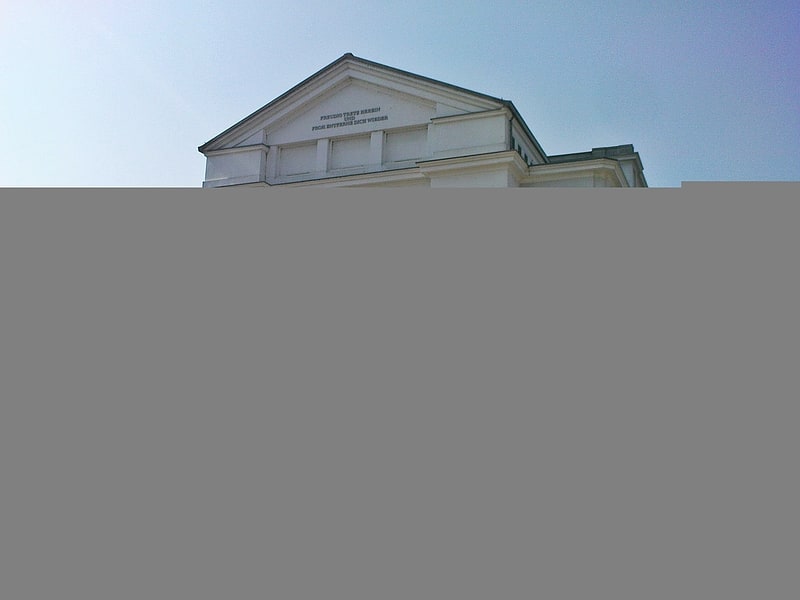
Theatre in Magdeburg, Germany. Theater Magdeburg is the principal theatre organization in Magdeburg, Germany, the capital of the state Saxony-Anhalt. It was formed in 2004 with the merger of two theatres, the Theater der Landeshauptstadt and the Freie Kammerspiele. It presents performances of opera, ballet, musical theatre, concerts, and plays, listed in detail from 2011. Theater Magdeburg has its own opera, ballet, and theatre companies and is the home of the Magdeburg Philharmonic Orchestra. It has three main performing venues. the Opernhaus, the Schauspielhaus, and the DomplatzOpenAir, which is set up each summer near Magdeburg Cathedral.[4]
Address: Universitaetsplatz 9, 39104 Magdeburg
MDCC-Arena

Multi-purpose stadium in Magdeburg, Germany. MDCC-Arena is a multi-purpose stadium in Magdeburg, Germany. It has been completed and opened to the public in December 2006, replacing the old Ernst-Grube-Stadion. It is mostly used for football matches and hosts the home matches of 1. FC Magdeburg.[5]
Address: Heinz-Kruegel-Platz 1, 39114 Magdeburg
Jahrtausendturm
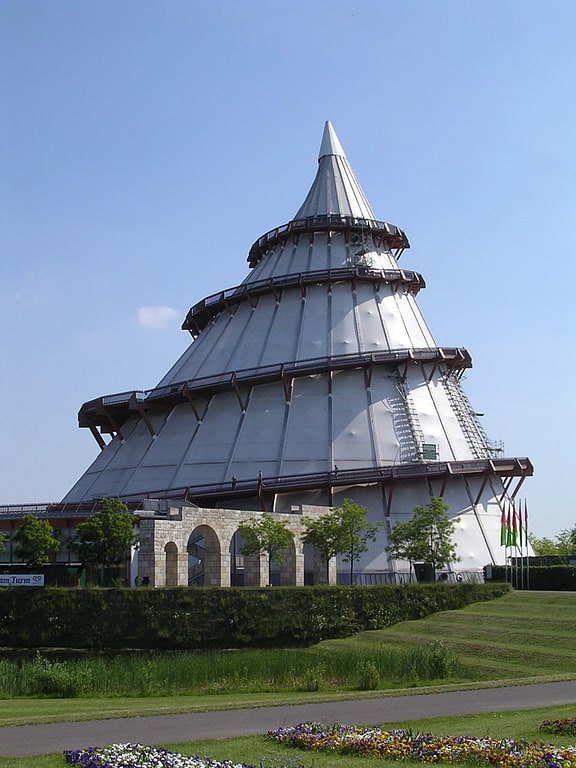
Tower in Magdeburg, Germany. Jahrtausendturm is, at 60 metres, one of the highest wooden towers in the world. It was established on the occasion of the Bundesgartenschau 1999 in the Magdeburger Elbauenpark in Magdeburg, Germany. The tower houses an exhibition on the development of sciences, which is supported by many descriptive experiments with which the visitor can interact. One notable example is a powerful telescope through which visitors can observe the distant clock-face on the Magdeburger cathedral.[6]
Gruson-Gewächshäuser
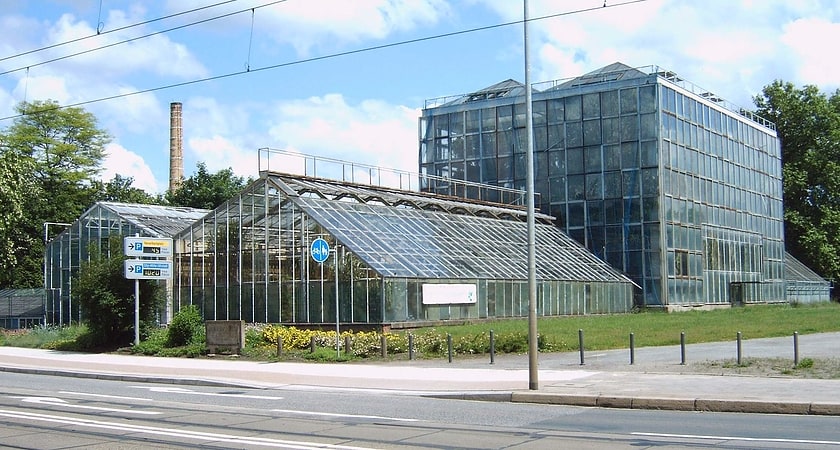
Botanical garden in Magdeburg, Germany. The Gruson-Gewächshäuser, more formally known as the Gruson-Gewächshäuser Magdeburg Exotische Pflanzensammlung, is a botanical garden located in greenhouses at Schönebecker Strasse 129 b, Magdeburg, Saxony-Anhalt, Germany. They are open daily except Monday.
The garden was created by industrialist and plant collector Hermann Gruson, who upon his death in 1895 bequeathed his extensive succulent collection and 100,000 Marks to the city of Magdeburg. The greenhouses opened to the public in 1896, with a Victoria house added in 1910. The garden suffered severe damage in World War II, with virtually all glass broken, and the palm house completely destroyed. By the summer of 1945, however, its cactus and succulent house reopened, as did the tropical house. Other houses were gradually restored, with the palm house rebuilt in 1986.
Today the garden maintains 10 exhibition halls (4000 m2 area) which contain about 3000 plant species from approximately 350 genera. Major collections are as follows:
- Cactus house - 400 cactus species, including a 150-year-old golden ball cactus (Echinocactus grusonii) named in Gruson's honor.
- Tropical Houses - tropical plants including banana, cocoa, guava, pepper, pineapple, rubber trees, and sweet potatoes.
- Victoria house - Victoria amazonica, as well as lotus, mimosa, rice, and sugarcane.
- Palm House (16 meter height) - many palm species and giant bamboo.
- Grusonian greenhouses - 400 species of bromeliads, exotic birds, and a dwarf palm tree.
- Fern house - ferns, some of which are more than 130 years old, as well as cycads.
- Mediterranean house - plants from the Mediterranean region, including camellia, citrus plants, fruit trees, laurel, and myrtle.
An annex contains aquariums and terrariums. The largest aquarium represents a river landscape with typical fish of the river Elbe. Collections also include Nile crocodiles, turtles, and piranhas.[7]
Address: Schoenebecker Str. 129b, 39104 Magdeburg
GETEC Arena
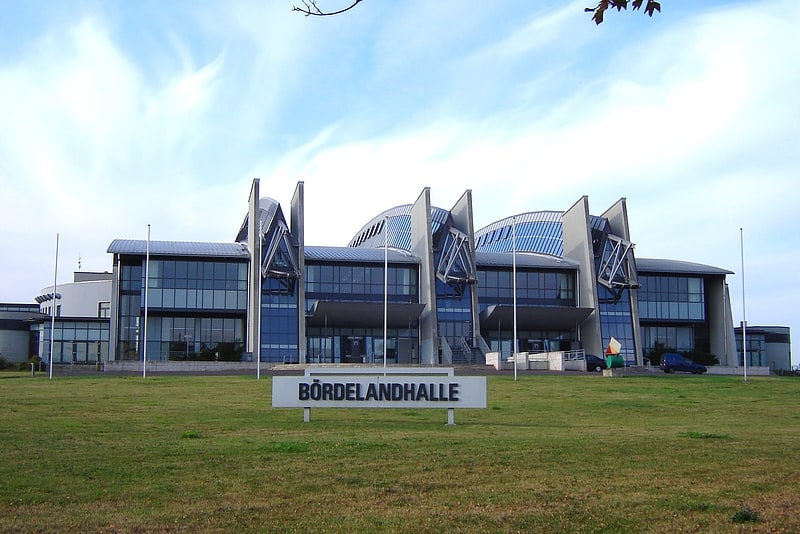
Sports arena in Magdeburg, Germany. The GETEC Arena is an indoor sporting arena located in Magdeburg, Germany. The maximum capacity of the arena is 8,071 people for handball games and 8,820 for boxing matches. It is the current home to SC Magdeburg's Handball-Bundesliga team.[8]
Address: Berliner Chaussee 32, 39114 Magdeburg
Kloster unser lieben Frauen
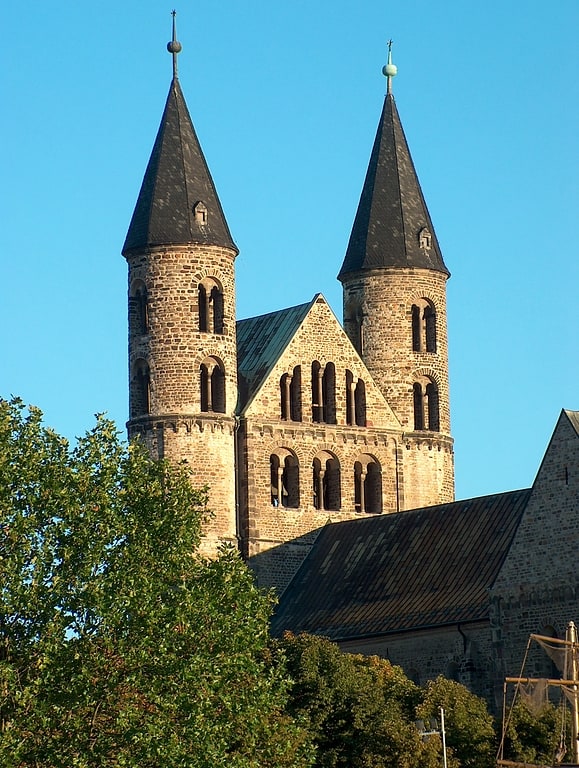
The Monastery of Our Lady is a monastery complex in Magdeburg's old town. The ensemble of buildings is one of the most important Romanesque complexes in Germany. Today the buildings are used as a municipal art museum Kloster Unser Lieben Frauen and concert hall. The monastery is one of the most famous sights of the city. It is located in close proximity to Magdeburg Cathedral and the city center.
Address: Regierungsstraße 4, 39104 Magdeburg
Hundertwasserhaus 'Grüne Zitadelle'
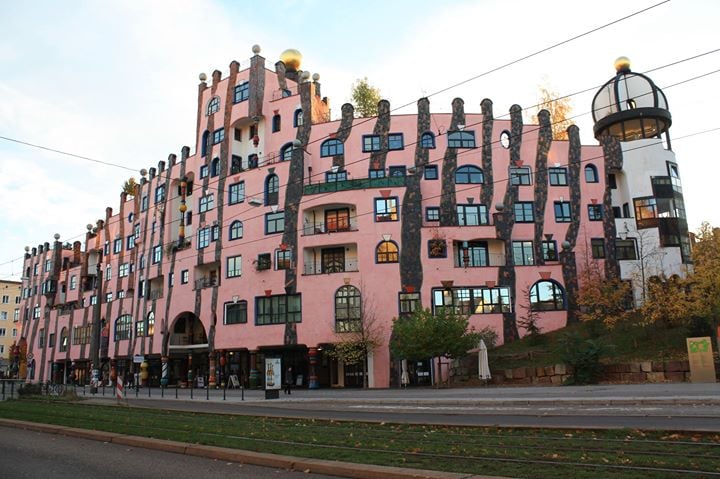
Green Citadel - a postmodern residential complex in Magdeburg, designed by Friedensreich Hundertwasser.
Pink, contrary to the name, the complex is located at ul. BRIERWEG and was put into use in October 3, 2005, 5 years after the architect's death. Sometimes considered his last work. Hundertwasser worked on her plans shortly before his death in 2000. Discussions on the Austrian artist's project divided the Magdeburg environment. His design, called the oasis for humanity and for nature in the sea of rational households, also polarized the opinions of architects. In March 2004, construction works began - as the works progress, the voices of criticism were in the minority.
The complex is to serve not only the apartment, but also to think about the environment of the modern life of man, which was the guiding thought of Hundertwasser's work. Magdeburg belongs to those cities of the former GDR, which are characterized by an extremely large number of unattractive blocks of flats, which was the starting point for the architect's inspiration.
The architectural design includes: 55 apartments, shop premises, hotel, offices, kindergarten, as well as, from 2006, a permanent exhibition of Hundertwasser's works. The building is one of the goals of trips stopping in Magdeburg.
Address: Breiter Weg 8, 39104 Magdeburg
Technikmuseum
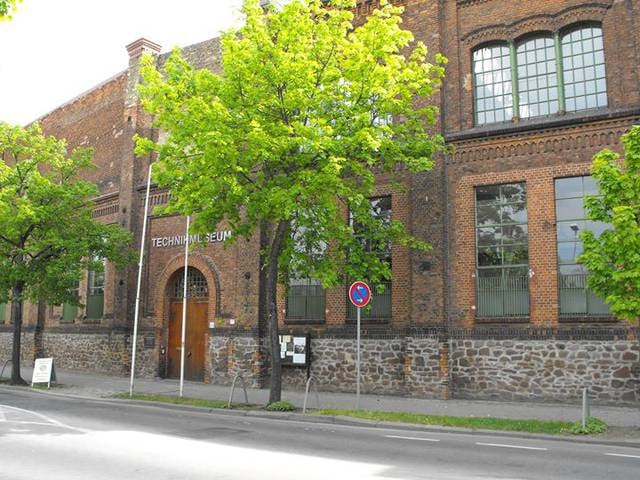
Museum, Specialty museum
Address: Dodendorfer Str. 65, 39112 Magdeburg
Kulturhistorisches Museum

The Kulturhistorische Museum Magdeburg is a museum in Magdeburg, which was originally founded in 1906 as an art-historically oriented Kaiser-Friedrich Museum. The museum focuses on the history of the city in permanent and special exhibitions. Art-historical pieces are also presented. The Museum für Naturkunde Magdeburg is also located in the same building.[9]
Address: Otto-von-Guericke-Str. 68 -73, 39104 Magdeburg
Lukasklause
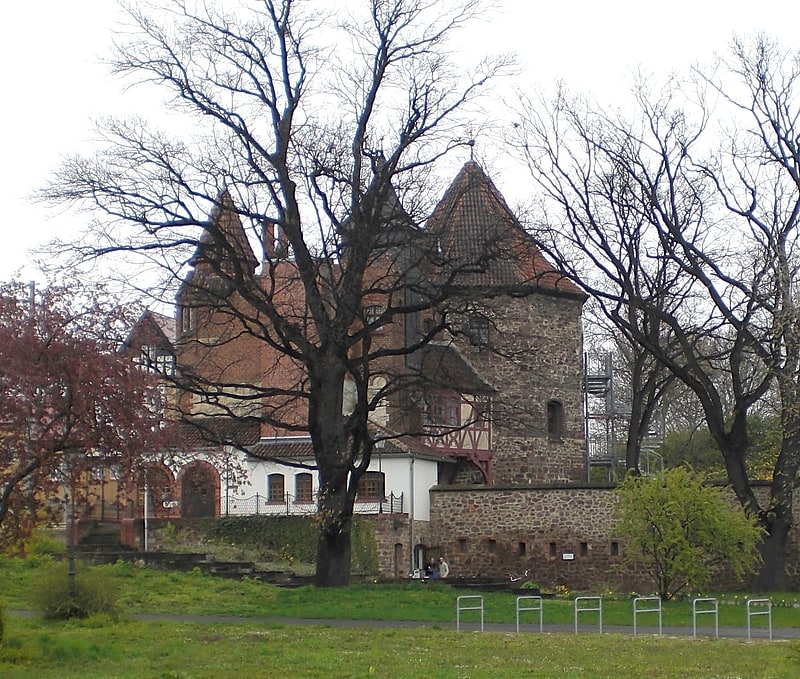
The Lukasklause is a late Gothic former fortified tower in Magdeburg, parts of which date from the Middle Ages. Today, the structure is used as a museum.
Address: Schleinufer 1, 39104 Magdeburg
Villa p. - Figurenspielsammlung Mitteldeutschland

The villa p. is a listed Wilhelminian half-timbered villa in Magdeburg's Buckau district, which houses the puppetry collection of the Puppentheater Magdeburg. It is located at Porsestraße 13 in 39104 Magdeburg.
Address: 13 Porsestraße, Magdeburg
Domfelsen
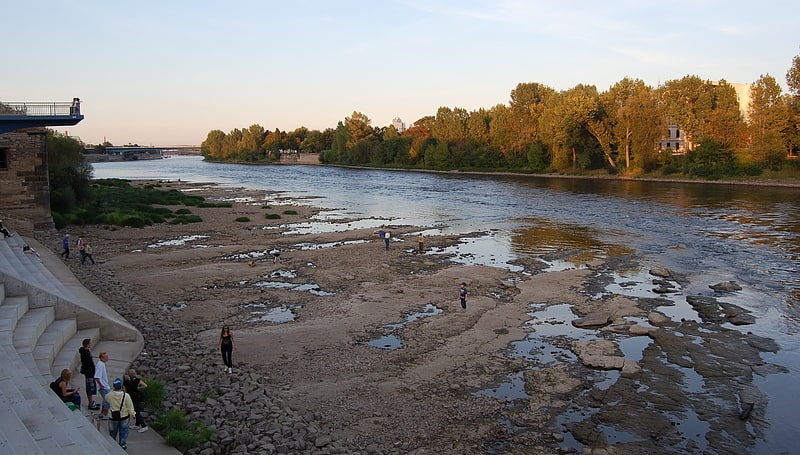
The Domfelsen is a rock formation near Magdeburg Cathedral, part of which juts out into the River Elbe in Germany. The name means "Cathedral Rocks"[10]
Hubbrücke
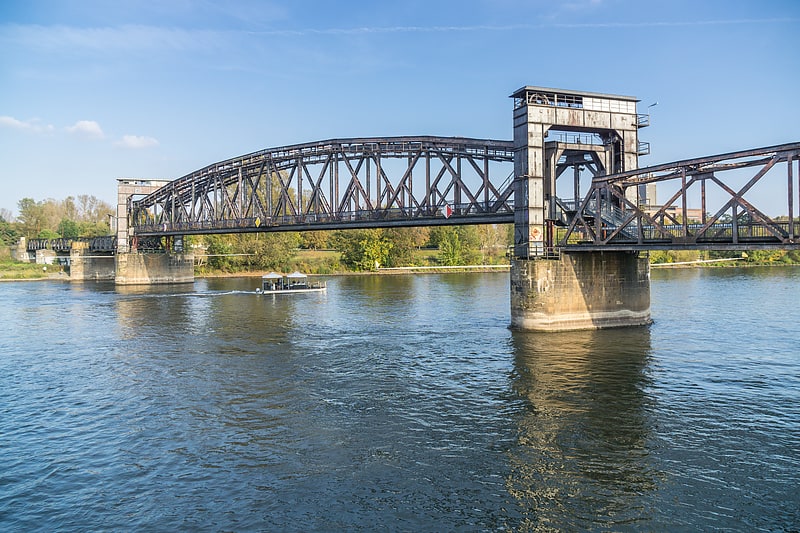
The Magdeburg Lift Bridge is a lift bridge that spans the Elbe River in Magdeburg at river kilometer 325.47. It was built in 1848 as a single-track railroad bridge and is now usable as a pedestrian bridge. It is one of the oldest and largest lift bridges in Germany and is a listed building.
St. John's Church
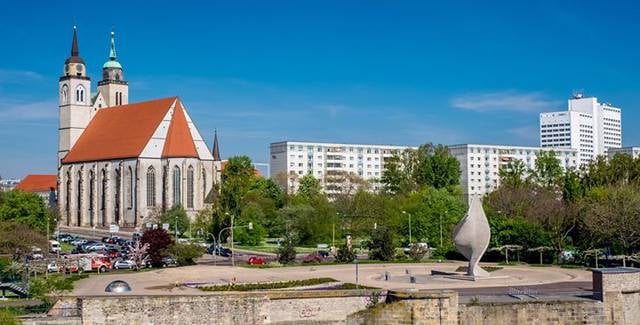
Church
Address: Johannisbergstraße 1, 39104 Magdeburg
Skulpturenpark

The Magdeburg Sculpture Park is a collection of sculptures from the Kunstmuseum Kloster Unser Lieben Frauen Magdeburg in Magdeburg's old town.
Ehem. Staatsbank
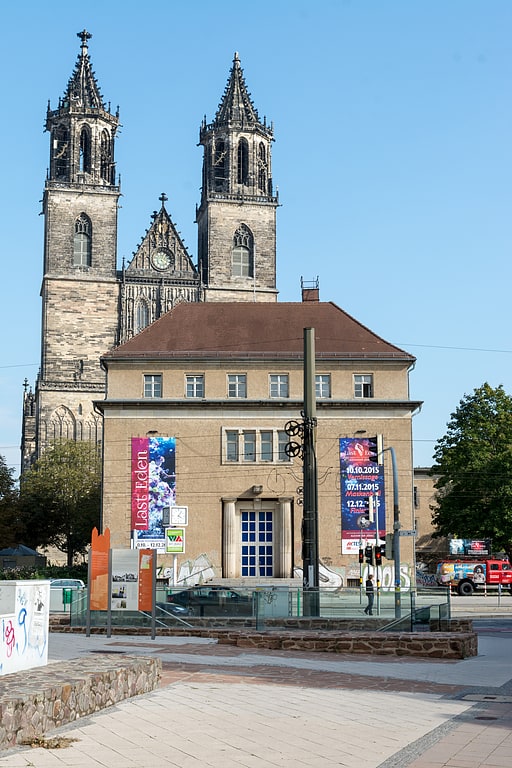
The Dommuseum Ottonianum Magdeburg is a museum in Magdeburg that opened in November 2018.
Address: Domplatz 15, 39104 Magdeburg
Festung Mark
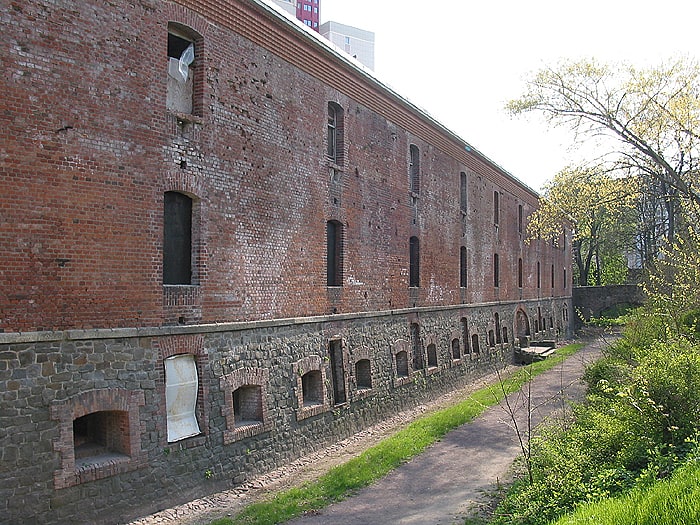
Festung Mark, formerly known as Kaserne Mark, is a former "defensive barracks" of the Magdeburg Fortress. Today it is used as a center for cultural events in Magdeburg. The building is now a listed monument. Due to the few surviving defensive barracks in Germany, the Mark Fortress has a supra-regional significance for the history of military construction in the 19th century.
Address: Hohepfortewall 1, 39104 Magdeburg
Sankt Gertraud
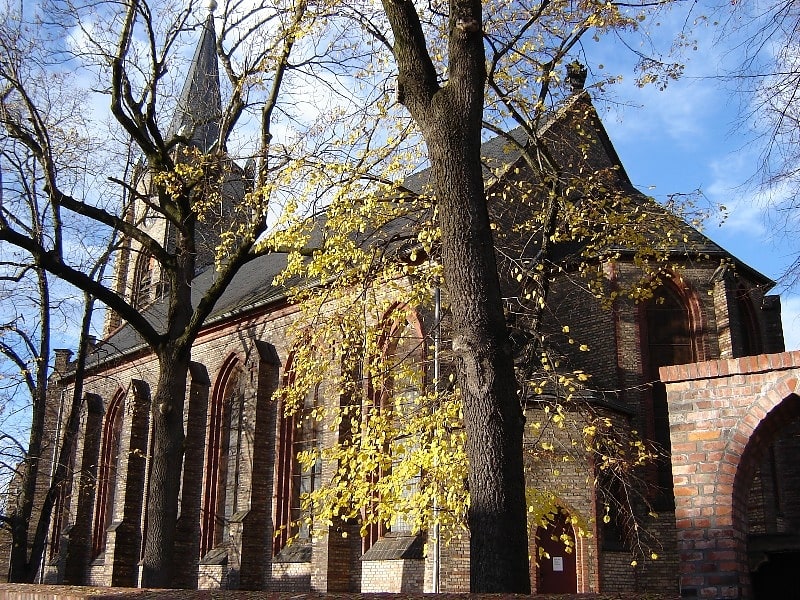
St. Gertraud's Church is the Lutheran church of Salbke, a district of Magdeburg since 1910. It belongs to the parish of Magdeburg-Südost.
Address: Greifenhagener Str. 8, 39122 Magdeburg
Klosterbergegarten
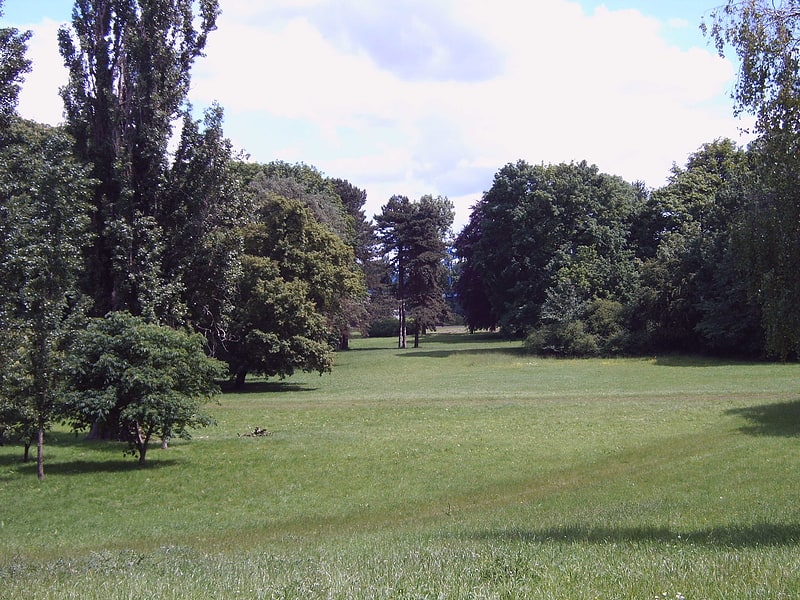
The Klosterbergegarten is a park of the city of Magdeburg in the Buckau district and was the first public garden in Germany.
Albinmüller-Turm
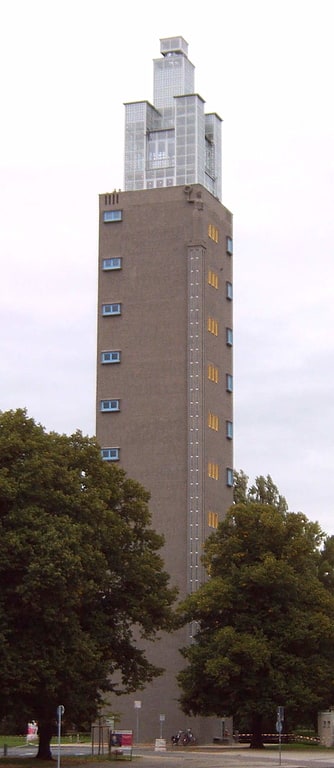
The Albinmüller Tower is an observation tower in the Rotehorn Park in Magdeburg and is one of the city's landmarks. The observation tower helps shape Magdeburg's city skyline and is located near the Elbe River on the Elbe island Werder next to the Magdeburg City Hall. With its elegance and functionality, the tower is a significant example of the New Building style of the 1920s.
Ausfahrt an der Möllenvogtei

The exit at the Möllenvogtei is the only surviving medieval gate of the city of Magdeburg.
Buckau
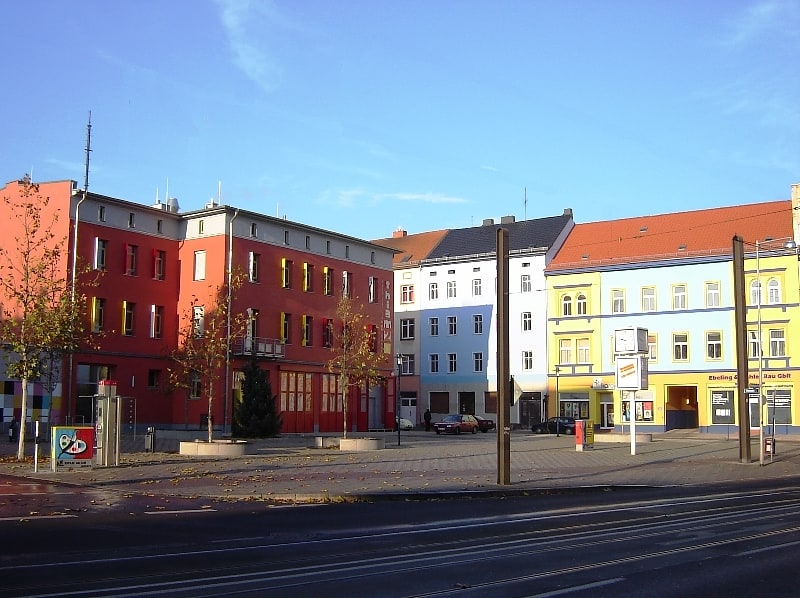
Buckau is a quarter of the city of Magdeburg, capital of the German state of Saxony-Anhalt. It covers an area of 2.1803 km² and has a population of 6,217. Its name originates from the Slavic name "Bukow". "Buk" means "beech" in Polish.[11]
Address: Karl-Schmidt-Straße 56, Magdeburg
Fort XII
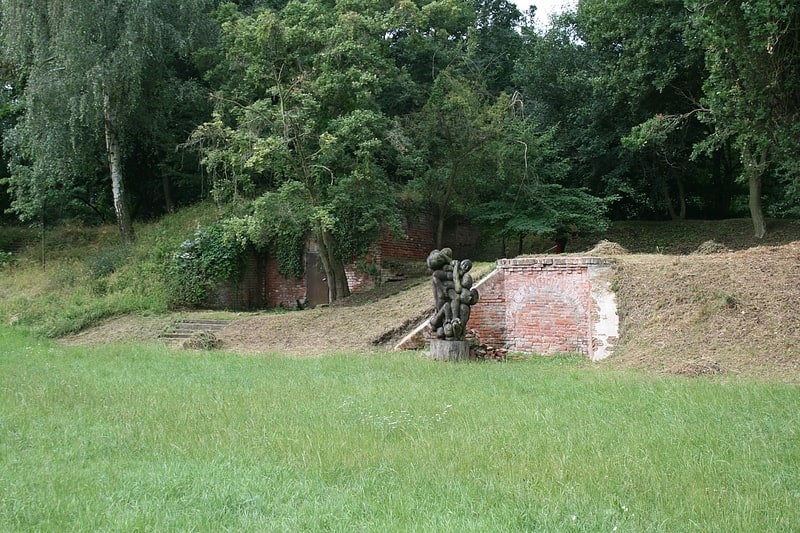
Forts and castles
Address: Heinrich-Heine-Weg, 39114 Magdeburg, Magdeburg
Brücke am Wasserfall
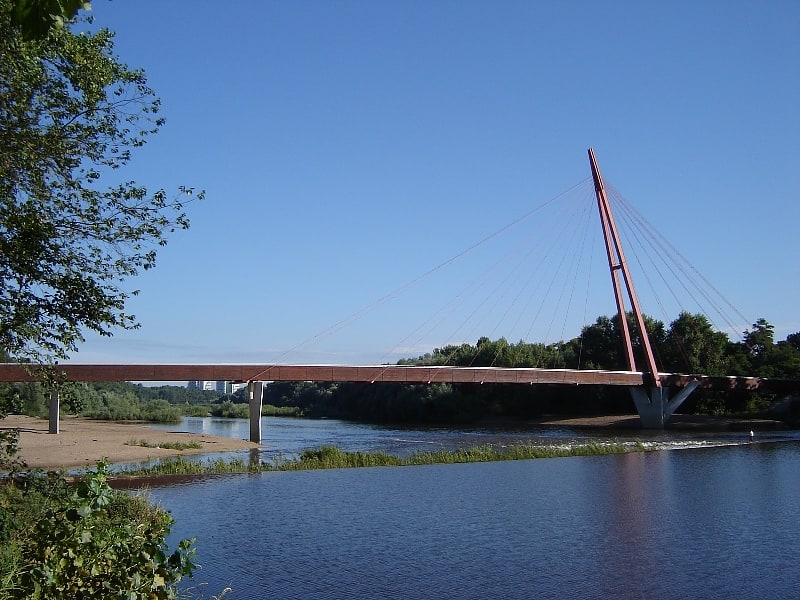
The bridge at the waterfall is a pedestrian and bicycle bridge over the Alte Elbe in Magdeburg. It connects the eastern district of Cracau with the western Rotehornpark, which is located on the Elbe island Großer Werder. The structure stands about 70 m below the Cracau weir, which is also called the Cracau waterfall. After about a year of construction, the pedestrian and bicycle bridge was opened to traffic on December 1, 1997.
The bridge train, which is 232.5 m long in total, consists of a 37.5 m long western foreshore bridge made of reinforced concrete and a 195 m long cable-stayed bridge with main girders made of glulam. In the main opening over the Alte Elbe, the single-span cable-stayed bridge has a span of 72m.
The glulam truss structure bridges the Elbe with four reinforced concrete piers. The eastern main pier supports the 35 m high steel pylon, which is inclined towards the river. The A-shaped pylon has two cable levels. At the pylon head, six pairs of steel cables are tensioned in the direction of the main opening and five pairs in the direction of the secondary opening.
The 3.6 m superstructure of the river bridge has a trough cross-section with 2.0 m high main girders arranged on both sides. The main girders are made of glued larch planks and are connected by steel cross frames on which the roadway is arranged.
Near the bridge, on May 9, 1992, Torsten Lamprecht, then 23 years old, died in an attack by 50 neo-Nazis on a party of young leftists and punks. In commemoration of this act, the bridge was to be named after the victim. Instead, in 2013 the path leading to the bridge was given the name Torsten-Lamprecht-Weg.
Faunenbrunnen
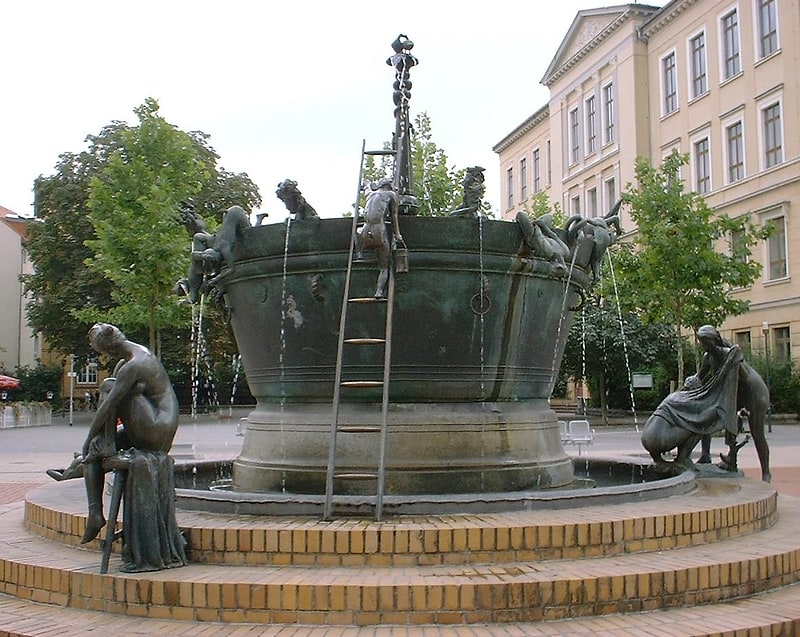
The Faunbrunnen, also known as Faunenbrunnen or Teufelsbrunnen, is a fountain in Magdeburg's Old Town.
Herrenkrugsteg

The Herrenkrugsteg is a bridge that spans the Elbe River and the embanked foreland as well as the lock canal in the north of Magdeburg. The structure, which is s-shaped in plan, connects Herrenkrugpark on the east side with the district of Magdeburg-Industriehafen to the west. The foot and cycle path bridge was built on the occasion of the 1999 Federal Garden Show.
The bridge train, which is 615 m long in total, consists of an unusually designed, 250 m long suspension bridge in the river area, which spans the Elbe with a center span of 145 m. The superstructure is supported by two 27 m high pylon stems consisting of three steel tubes arranged in a triangle, which are connected at five points and converge at both ends. The inclined pylons are arranged alternately offset to the side of the superstructure and braced at the head by cables. The weight of the superstructure is suspended from two 12 cm thick suspension cables that run over the pylons and are anchored back in the next pier head.
The superstructure of the suspension bridge with a 3.9 m wide deck has a 30 cm thick and 5.3 m wide reinforced concrete slab. This consists of 15 cm thick semi-precast elements, which were delivered via the Elbe, hoisted and attached to the hangers, and a 15 cm thick in-situ concrete layer.
Sankt Johannis
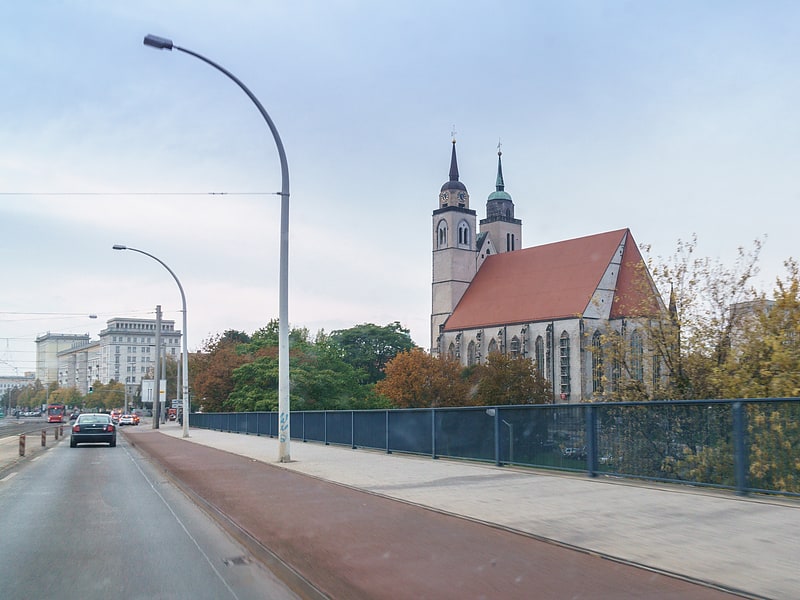
St. John's Church in Magdeburg is a former church building in the Altstadt district with the address Johannisbergstraße 1. It was dedicated to St. John the Evangelist until its profanation. Since 1999 it has been used as a festival hall and concert hall of the city of Magdeburg. From January to June 2014, it served as a meeting place for the state parliament of Saxony-Anhalt.
Address: 1 Johannisbergstraße, Magdeburg
Rotehornpark
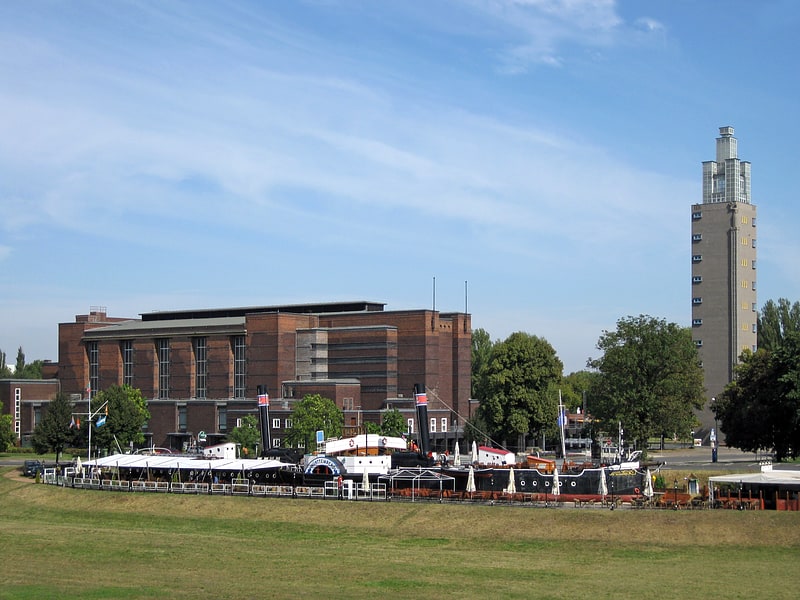
Rotehornpark, also known as Stadtpark Rotehorn, is the largest municipal park in the city of Magdeburg, covering an area of 200 hectares. The park is located on an island in the Elbe River and is part of the Saxony-Anhalt Garden Dreams network.
Glockenturm Sankt Stephanus
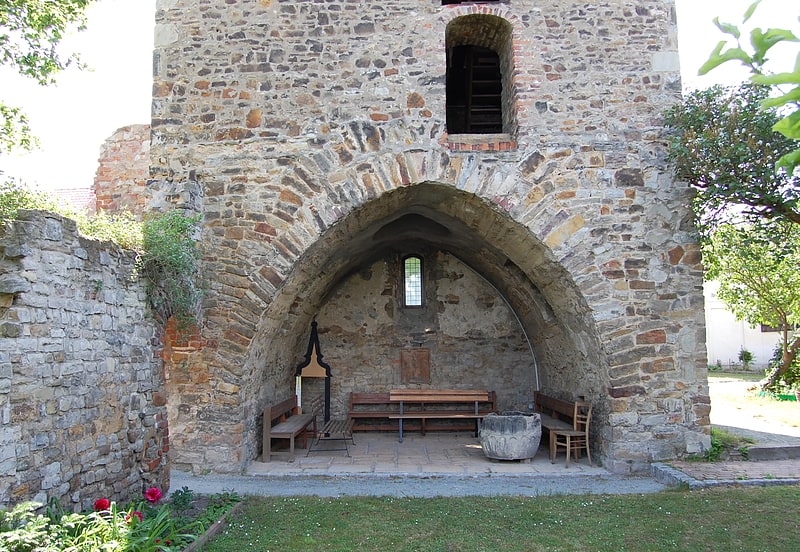
St. Stephen's Church is a Protestant church in Magdeburg's Westerhüsen district with a history of construction and congregation dating back to the Romanesque period. After destruction during the Second World War, today essentially only the church tower remains. However, it continues to serve the parish of Sankt Stephanus as a summer church, which uses the community hall located on the grounds in inclement weather. The parish belongs to the Magdeburg-Southeast parish of the Protestant Church in Central Germany.
It is located in the old center of the former village of Westerhüsen in the immediate vicinity of the Elbe River, above which it rises on a hill on the left bank of the Elbe.
Address: Elmer Str. 2, 39122 Magdeburg
Universitätskirche Sankt Petri
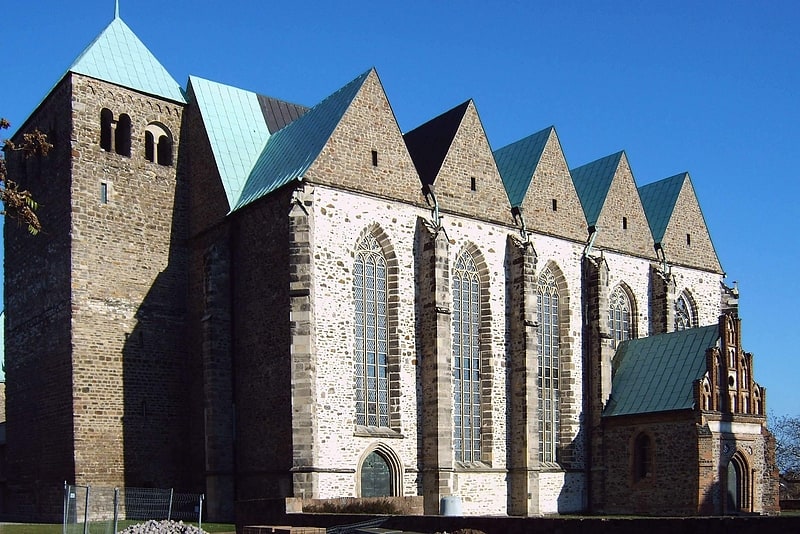
Saint Peter's Church is a Catholic church in Magdeburg's old town. It is dedicated to Saint Peter, the patron saint of fishermen. It is part of the Romanesque Road.
Address: Neustaedter Str. 4, 39104 Magdeburg
Wallonerkirche

The Wallonerkirche is a Lutheran church in Magdeburg's Altstadt district. The church and the attached community center are used by both the Evangelical Lutheran congregation of Altstadt and the Evangelical Reformed congregation of Magdeburg. Since 2004, the Protestant student congregation has also used rooms in the church. Along with the cathedral, St. Sebastian's Church and St. Peter's Church, the Wallonerkirche is the only remaining historic church in Magdeburg's old town that is still used for religious purposes.
Address: Wallonerberg 6, 39104 Magdeburg
Die Rettungstat des Hauptmann Igor Belikow

The rescue act of Captain Igor Belikov is a sculpture in the old town of Magdeburg.